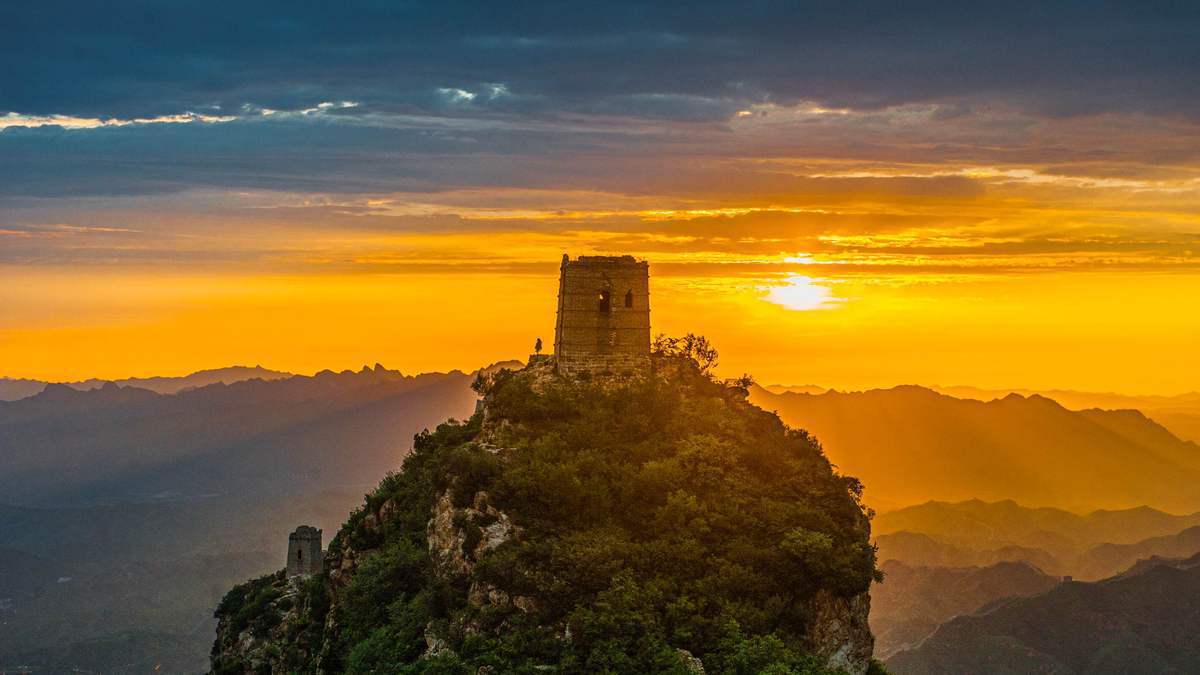
The Simatai section of Great Wall bathed in the sunset.[Photo provided to chinadaily.com.cn]
The Simatai Great Wall is located in the north of Simatai village, Gubeikou town, Miyun district in northeastern Beijing. It is situated close to Gubei Water Town and is 120 kilometers away from urban Beijing. Part of the Yanshan Mountains, the Simatai Great Wall was entirely built on steep mountain terrain and is renowned for its five distinctive features: steepness, density, intactness, ingenuity and completeness.
The Simatai Great Wall starts from the Wangjing Tower in the east and ends in Houchuankou in the west, spanning a total of 5.7 kilometers in length. The Yuanyanghu Reservoir divides the Great Wall into eastern and western sections. The east section has 16 watchtowers, while the west section has 19, making a total of 35 watchtowers (including one that has been submerged). In 1987, the Simatai Great Wall was listed as a World Heritage Site and is the only ancient architectural site that preserves the original appearance of the Ming Dynasty. UNESCO has recognized it as the “Original Great Wall”. Luo Zhewen, a famous ancient Chinese architecture expert, once praised the Simatai Great Wall as “the most representative section of China’s Great Wall”.
Wangjing Tower (Overlooking Capital Tower)
Wangjing Tower, at an altitude of 986 meters, is the highest point of the Great Wall along Simatai and Gubeikou. From a distance, it resembles a bodkin piercing the blue sky. According to local residents, in ancient times, one could faintly see the outline of the capital from this tower, and at night, the twinkling lights of Beijing were visible, hence the name "Wangjing Tower" (Overlooking Capital Tower). Climbing up the Wangjing Tower, the scenery indeed becomes both more magnificent and beautiful. Looking down at the cliff below, it appears as if it has been carved by a knife and axe. Threads of mist hang around the cliff, adding to its steep and treacherous appearance. To the northwest, the Jinshanling Great Wall seamlessly merges with the Simatai Great Wall, resembling a soaring dragon about to take flight.
From:chinadaily.com.cn





